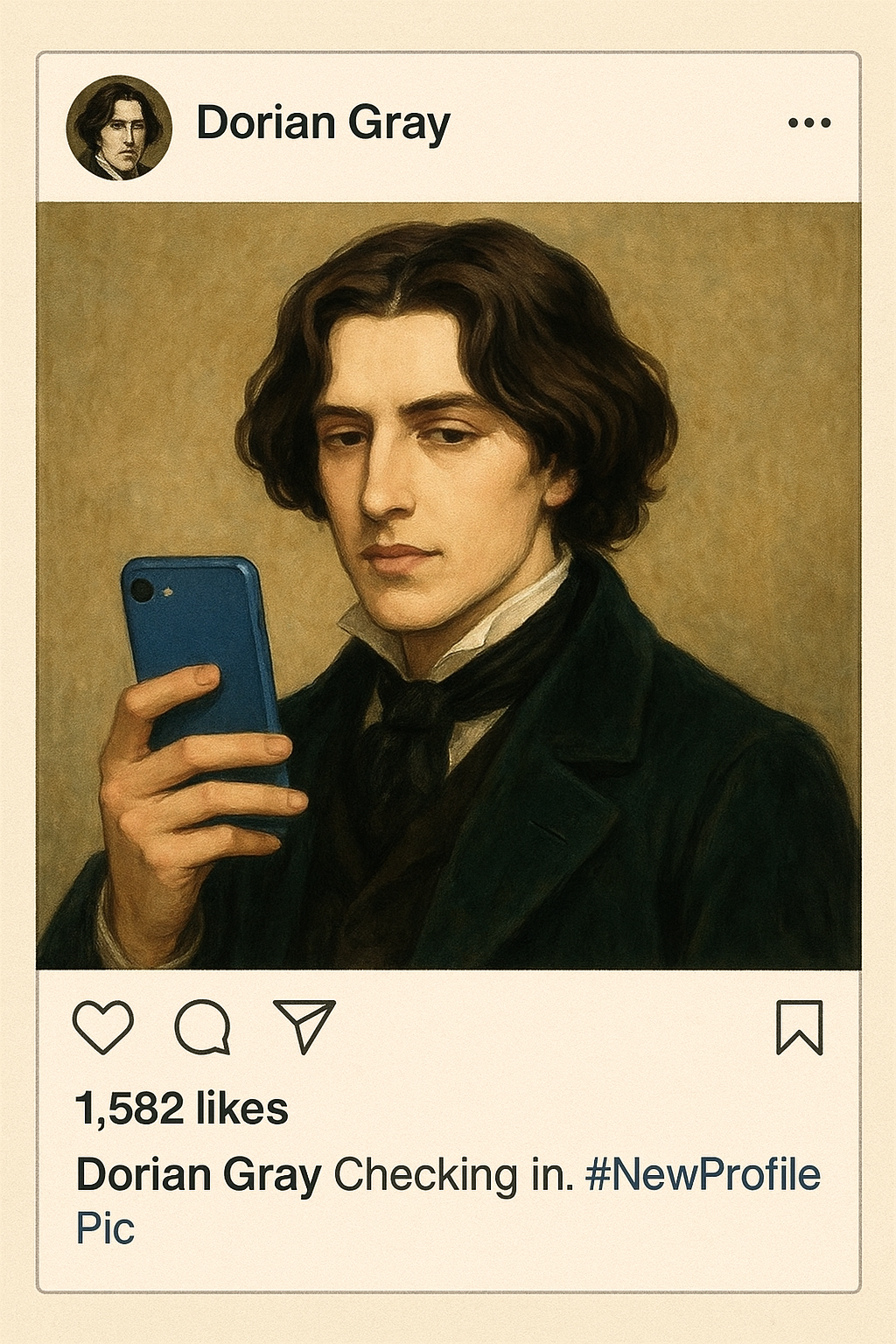Victorian novels are a useful way of teaching digital civics lessons in the classroom, without having to add yet more content to an already overloaded curriculum. One example is Oscar Wilde’s The Picture of Dorian Gray.
This post is a summary of the article Asking Dorian Gray for a Digital Civics Education @ Journal of Literacy and Technology
When the first digital civics pedagogy project launched in 2010, its vehicle was a book by Oscar Wilde: The Picture of Dorian Gray. Surprisingly, a late-Victorian novel and the world of digital technology have a great deal in common, and this made it an excellent piece for teaching and learning about life in the digital age using materials already taught in schools. A Victorian novel often appears in a school’s curriculum somewhere, and in Ireland -where the pedagogy project was centred- Dorian Gray was a popular choice.
The positive takeaway is that schools, and teachers, can utilise materials they already teach to support new lessons about life in the digital age. And, this is not only because the Victorians, like us, are simply people trying to live their lives experiencing the human condition in ways that are universally relatable. There are two very specific things that make the Victorian period and it’s literature very useful to understanding and learning about our current digital age circumstances specifically: the first is that the Victorians invented, and then set up, much of the technological infrastructure used in the digital age and consequently were asking a lot of questions about the changes they saw rapidly happening around them, and these concerns show up in their literature; the second is that many of the social norms we take for granted now in our digital age, were set down by the Victorians.
The technological infrastructure and the social infrastructure of the Victorians still shape our daily lives. Our value on media: photographic image, audio, and video are attributable to Victorian innovations. Our wireless technologies rely on Victorian age scientific infrastructures. Even concepts like celebrity culture find their roots in the Victorian period. (Jerusha McCormick’s lecture on this is a great straightforward resource for teachers that you can find here.)
One of the great challenges for educators is the frustration of trying to cram so much new material about life in the digital age into an already over-packed curriculum, but by understanding the Victorian novel (and even the Victorian period itself) as foundational to our current digital age circumstances, we can find ways to pose quick observations and questions, that integrate the aims of digital civics without interrupting the flow of our lessons. A free open access paper that explains why, and how, is available to teachers here. It also provides an appendix of useful questions to guide classroom discussions on Dorian Gray as a teaching resource for Digital Civics.
Questions like “Are the consequences of Dorian’s actions confined to the painting in his attic? How might our interactions in our digital lives spill out into our offline lives?” or “How is shame a part of everyday Victorian life? How is it a part of everyday digital age life?” serve to simultaneously get students thinking about the book’s story; appreciate that it’s content is still relevant to their lives; and make connections with their historical antecedents. This supports students to understand that even though the digital age seems like it’s made up of completely new or never before seen problems, there are still important and helpful places they can look to learn how to cope in a digital age. Young people aren’t divorced from history, it still has a lot to offer them, and a Victorian novel might be a great place to start to figure that out.
Image by ChatGPT

